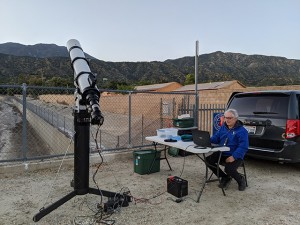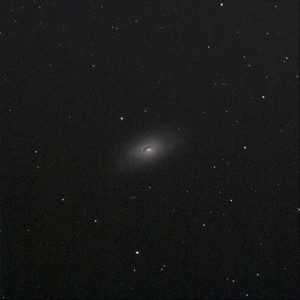The previous post mentions how I started trying out photographing Messier objects from my home in Monrovia, using my Astro-Physics Traveler 105mm f/6 refractor. The results were encouraging enough that I had to bring out the giant AP180EDT and see how that would go.
This is not a one-person telescope. It really takes two to lift it into the mount rings, and dismount it after the session. I’m heavily dependent on Jane for the setup and (most importantly) the takedown. It turns out she’s a full supporter of the project, and offered to help me take down even when it would mean waking her at 2:30 or 3:00 a.m. That’s true love!
While we’ve had the telescope for about twenty years, the original mount has been replaced with an AP1100GTO. That should make it an astrophotography demon. Without the ability to “goto” an object, this project would be all but impossible in the city sky glow.
My experience with the equipment consists of about two evenings testing, and one evening of actual observing, so there was a lot of tinkering, calibrating, and adjusting. I was fixing and tuning the hardware, and learning the software. I spent hours doing fine polar alignments, recording “bad pixel” maps for the guider, diagnosing guiding errors, and such.
That said, I still managed to capture what I consider stunning images for such a bright location. I’ve been logging two more Messier objects each evening, and with several good clear moonless nights in a row, I haven’t been able to resist.
I’ll just put all the comments in the captions. If you click on any of the images it will link to the highest resolution version, with every wart visible. 
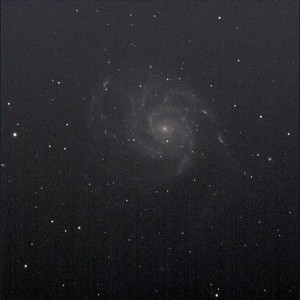
Spiral galaxy M101 in Ursa Major. You can see how the sky glow makes the fainter details in the arms difficult, but it’s not a bad picture!
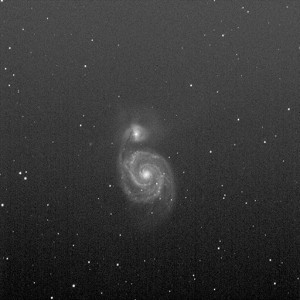
The famous Whirlpool Galaxy M51 in Ursa Major. Not as much detail as a shot I did in February from GMARS. I found by giving up on color and reducing luminance only, the photo has some real pop to it.
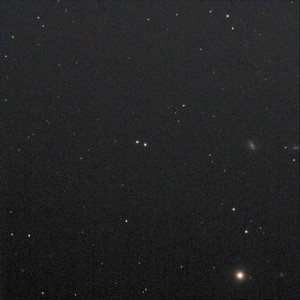
M40 is Messier’s silliest catalog object. It’s just a double star. But look at that background galaxy on the right photobombing the picture.
Tech details:
- Telescope 180mm f/9 refractor
- Mount AP 1100GTO
- Camera SBIG ST-4000XCM CCD one-shot color (Bayer matrix)
All of the images here were made by collecting 30 minutes of light, as six 5-minute exposures. The images were processed with CCDStack2.

